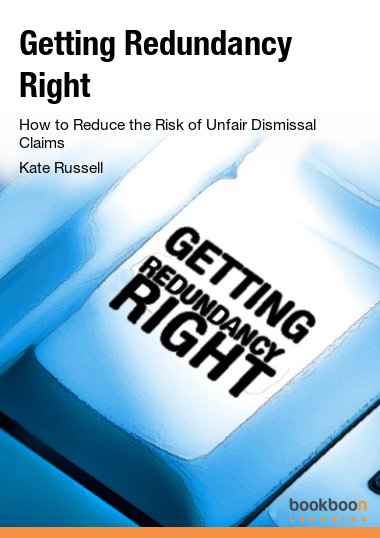This book is a useful guide for those who are new to HR or managing teams. Getting Redundancy Right takes the reader through an explanation of what redundancy is and what can be done to reduce the need for it. The book sets out the redundancy process in simple, straightforward steps. Written in an easy-to-read style by an HR practitioner of considerable experience, the reader will understand what has to be done to limit the risk of unfair dismissal claims, guidance on best practice as well as some robust no nonsense advice. Illustrative case studies add an amusing human dimension to the topic.
About the author
Kate Russell, BA, barrister, MA is the Managing Director of Russell HR Consulting and the author of this publication. She is the author of Build Your Dream Team – How SMEs Can Plug the Talent Gap, plus several other practical employment handbooks and e-books.
Russell HR Consulting Ltd delivers HR solutions and practical employment law training to a wide variety of industries and occupations across the UK. Kate has developed a reputation for being knowledgeable, robust and commercially aware and is especially well versed in the tackling and resolving of tough discipline and grievance matters.

